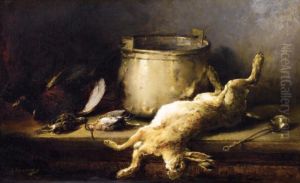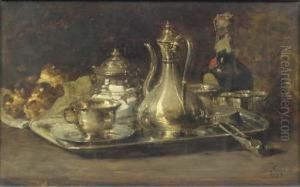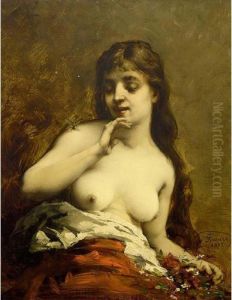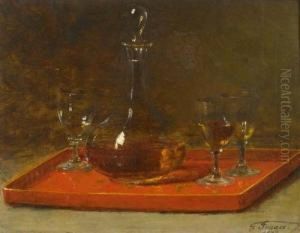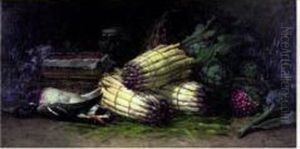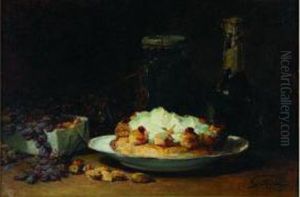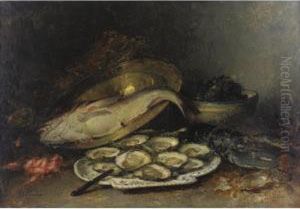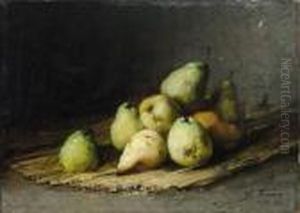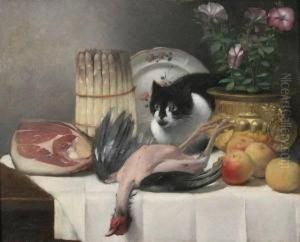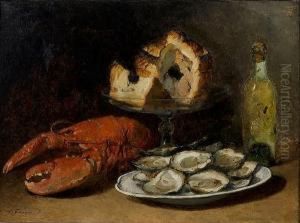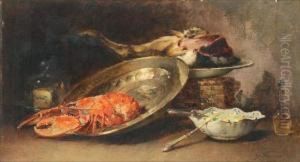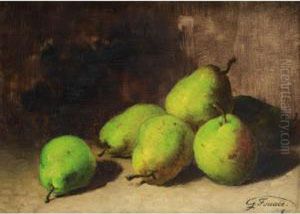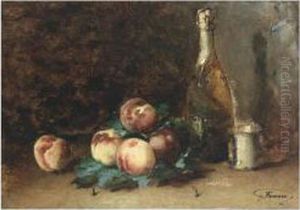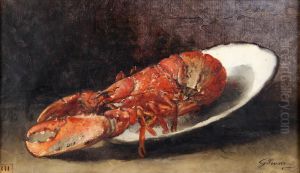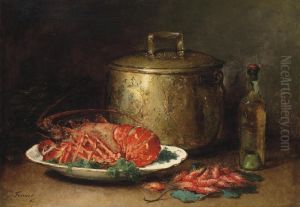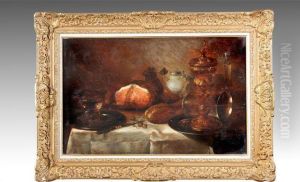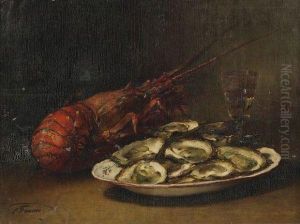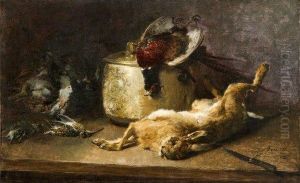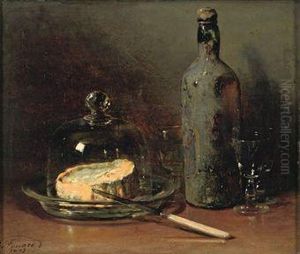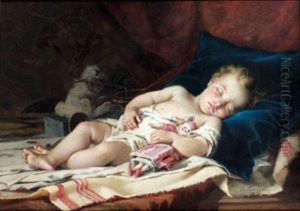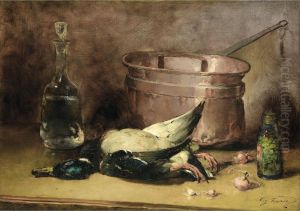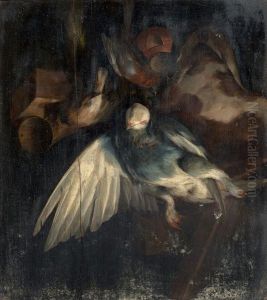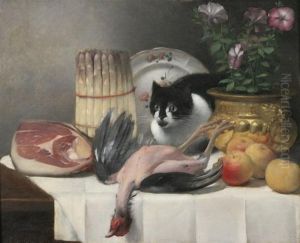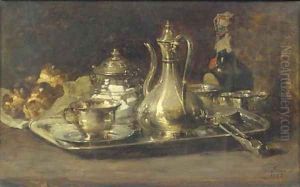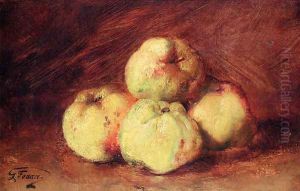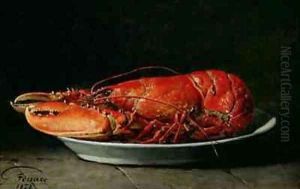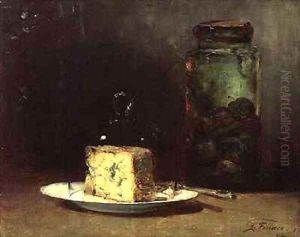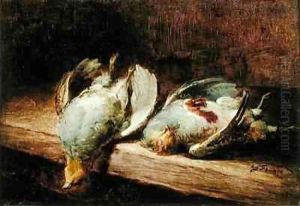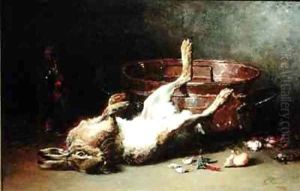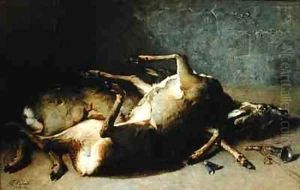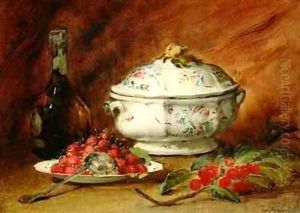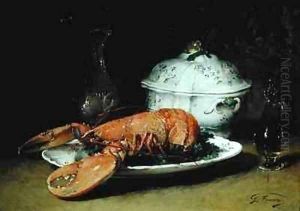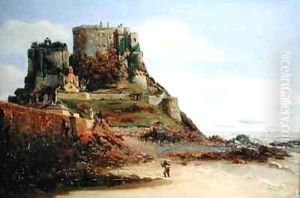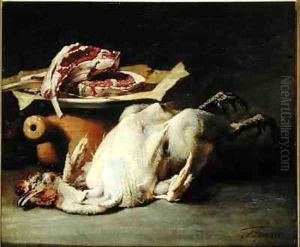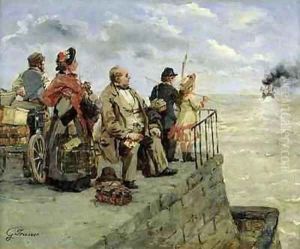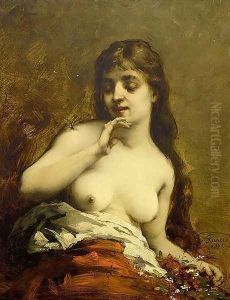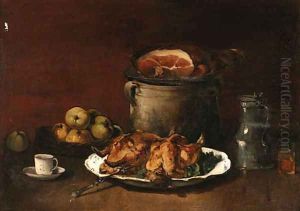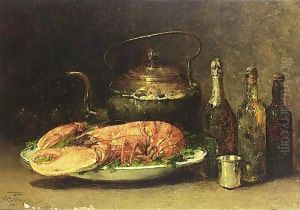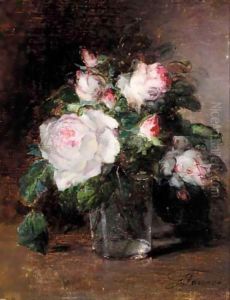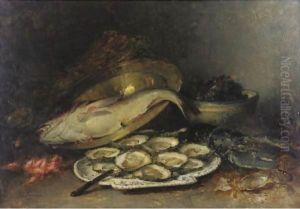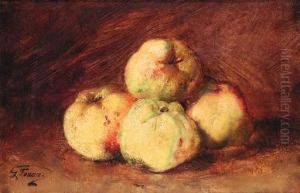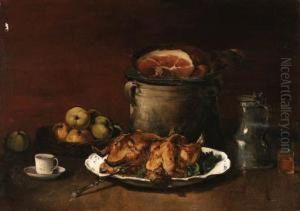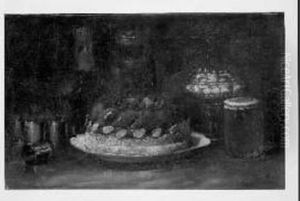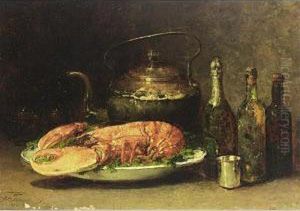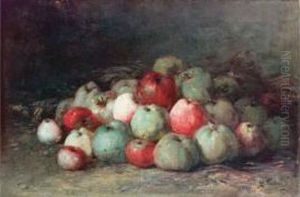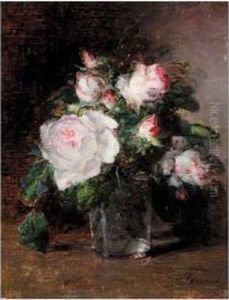Guillaume-Romain Fouace Paintings
Guillaume-Romain Fouace was a French painter known for his still lifes, portraits, and genre scenes. Born on October 8, 1837, in Réville, a small commune in Normandy, he developed an interest in art at an early age. Fouace received his initial artistic training in Cherbourg from Alexis-Hippolyte Delahogue and later moved to Paris to further his education.
In Paris, he studied under renowned academic painter François-Édouard Picot, who was known for his classical style and had a significant influence on Fouace's development as an artist. Fouace's work was characterized by its meticulous detail, vibrant colors, and often featured scenes from daily life, showcasing his ability to capture the character and essence of his subjects.
Fouace's talent was recognized early on, and he began exhibiting his work at the Paris Salon, the official art exhibition of the Académie des Beaux-Arts in Paris. He received favorable reviews and gained a reputation for his skill in painting. Throughout his career, Fouace remained dedicated to the Salon, which was the main outlet for artists to achieve fame and success during that period.
In addition to still lifes and portraits, Fouace also created religious paintings, which were well-received and earned him commissions from various churches in France. His work reflects the academic art trends of the 19th century, but he also managed to imbue his paintings with a sense of realism and warmth that resonated with the public.
Throughout his life, Guillaume-Romain Fouace was a respected figure in the French art world. His works are now part of several museum collections, including the Musée Thomas-Henry in Cherbourg, where his legacy as an artist from Normandy is commemorated. Fouace's dedication to his craft and his contributions to 19th-century French art continue to be remembered and appreciated. He passed away on January 7, 1895, leaving behind a body of work that continues to be studied and admired for its beauty and technical proficiency.
